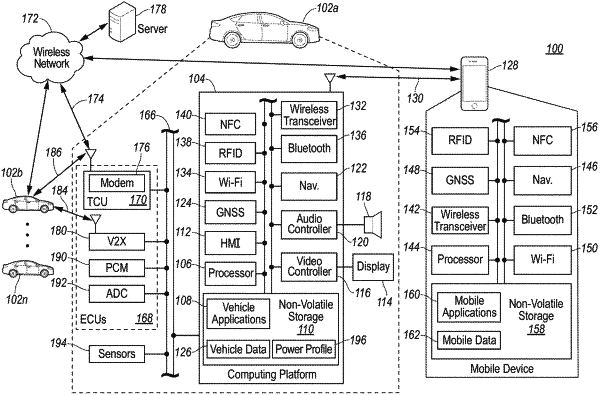| CPC G01C 21/3469 (2013.01) [B60W 10/06 (2013.01); B60W 50/14 (2013.01); G01C 21/3859 (2020.08); H04W 4/46 (2018.02); B60W 2530/10 (2013.01); B60W 2530/209 (2020.02); B60W 2556/65 (2020.02); B60W 2710/0666 (2013.01)] | 6 Claims |

|
1. A vehicle comprising:
one or more transceivers configured to communicate with a server via a remote connection and a fleet vehicle via a direct connection;
one or more sensors; and
one or more controllers programmed to:
responsive to detecting, via the one or more sensors, a first event associated with an increased energy consumption rate compared with a current energy consumption rate, obtain a first candidate energy consumption rate corresponding to the first event from the fleet vehicle,
calculate an estimated energy consumption rate using the first candidate energy consumption rate,
calculate a distance to empty using the estimated energy consumption rate,
obtain a first maximum torque corresponding to the first event, and
operate the vehicle within the first maximum torque.
|